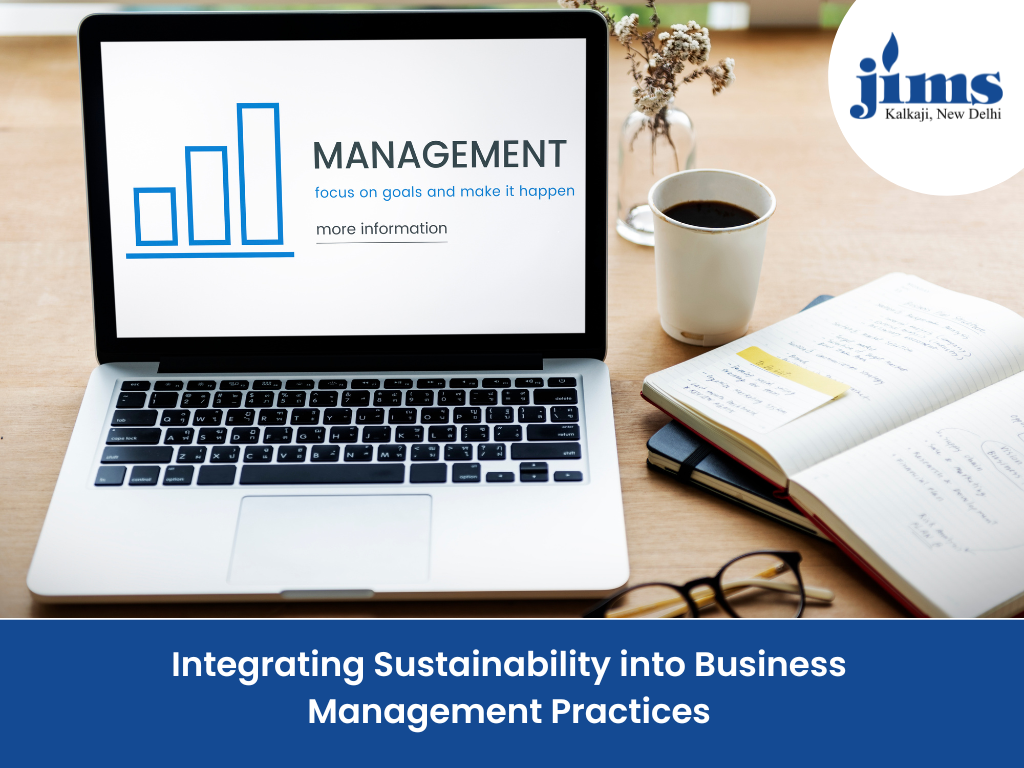In the current global landscape, where environmental concerns and social responsibilities are at the forefront, integrating sustainability into business management practices is no longer a choice but a necessity. Educational institutions like JIMS, Kalkaji, one of the top management college in Delhi is recognizing this shift and are focusing on equipping future business leaders with the knowledge and skills needed to implement sustainable practices. This blog aims to explore how businesses can effectively weave sustainability into their core strategies and operations, ensuring a positive impact on both the environment and society.
Understanding Sustainability in Business
Sustainability in business refers to the practice of managing a company in a socially responsible manner that considers the environmental, social, and economic impacts of its operations. This approach aims to create long-term value not just for the company, but also for society and the environment.
The Triple Bottom Line
The concept of the Triple Bottom Line (TBL) is central to sustainable business practices. It emphasizes three Ps: People, Planet, and Profit. This means balancing economic growth with environmental stewardship and social equity.
Why Sustainability Matters in Business Management
Environmental Concerns
The increasing impact of climate change and environmental degradation demands that businesses play a crucial role in mitigating these issues. Sustainable practices such as reducing carbon emissions, managing waste, and conserving resources are essential.
Social Responsibility
Businesses have a responsibility to society. This includes fair labor practices, community engagement, and contributing positively to the societies in which they operate.
Economic Benefits
Sustainability can also lead to economic benefits. Sustainable practices can reduce costs, improve efficiency, and open up new market opportunities. Furthermore, consumers are increasingly favoring companies that are environmentally and socially responsible.
Strategies for Integrating Sustainability
Leadership Commitment
Sustainable transformation begins with the commitment of the company’s leadership. Leaders must set clear sustainability goals and integrate them into the company’s vision and mission.
Stakeholder Engagement
Engaging stakeholders – including employees, customers, suppliers, and the community – is crucial. Understanding their perspectives and incorporating their feedback can enhance sustainability initiatives.
Sustainable Supply Chain Management
Sustainable supply chain management involves ensuring that a company’s supply chain is as environmentally friendly and socially responsible as possible. This includes ethical sourcing of materials and ensuring suppliers adhere to sustainability standards.
Green Operations
Implementing green practices in daily operations can significantly reduce environmental impact. This includes energy-efficient facilities, reducing waste, and utilizing sustainable materials.
Innovation and Technology
Leveraging technology and innovation can drive sustainability. From renewable energy technologies to sustainable product design, innovation is key to advancing sustainable practices.
Measuring and Reporting Sustainability
Sustainability Metrics
Establishing metrics to measure sustainability performance is essential. This includes indicators like carbon footprint, energy consumption, water usage, and community impact.
Reporting and Transparency
Transparent reporting of sustainability efforts is important for accountability and building trust with stakeholders. Many companies adopt frameworks like the Global Reporting Initiative (GRI) for this purpose.
Challenges in Integrating Sustainability
Balancing Profit and Sustainability
One of the main challenges is balancing short-term profitability with long-term sustainability goals. Companies often struggle with the initial costs of implementing sustainable practices.
Cultural and Organizational Change
Shifting to a sustainability-focused business model requires a cultural and organizational change. This includes training employees, changing operational processes, and often, a shift in corporate mindset.
Case Studies: Success Stories in Sustainability
XYZ Corporation’s Green Initiatives
XYZ Corporation reduced its carbon footprint by 25% over five years through renewable energy adoption and energy-efficient practices, demonstrating a successful integration of sustainability into its operations.
ABC Inc.’s Social Responsibility Programs
ABC Inc. has made significant contributions to community development and fair labor practices, setting a benchmark in social responsibility and enhancing its brand reputation.
Conclusion
Integrating sustainability into business management is not just about being environmentally conscious; it’s about creating a holistic approach that balances economic growth with environmental care and social responsibility. Educational institutions like JIMS, Kalkaji, one amongst the top mba college in Delhi is pivotal in this transition, educating future business leaders about the importance and benefits of this approach. As businesses adapt to this new paradigm, they are finding that sustainability is not just good for the planet and society, but it’s also beneficial for their bottom line.

